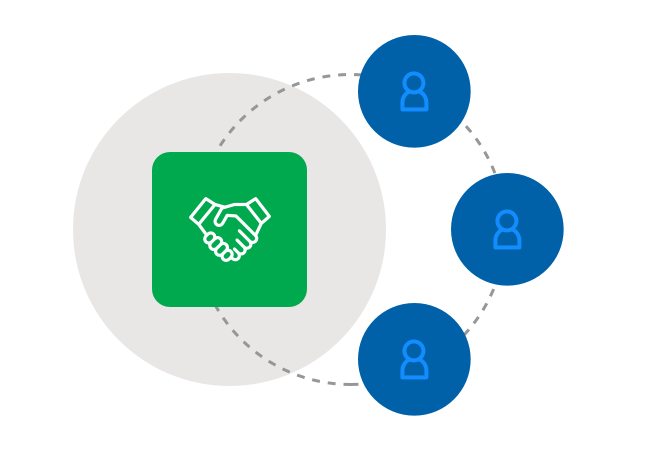A Plan for Corporate Security Quality: Guarding Your Venture
A Plan for Corporate Security Quality: Guarding Your Venture
Blog Article
From Cybersecurity to Physical Procedures: Reinforcing Business Security in an Altering World
By integrating the staminas of both cybersecurity and physical safety, business can produce a detailed protection method that attends to the varied variety of risks they face. In this discussion, we will certainly discover the transforming danger landscape, the requirement to integrate cybersecurity and physical safety and security, the implementation of multi-factor authentication measures, the importance of staff member recognition and training, and the adjustment of safety and security steps for remote workforces. By examining these key locations, we will certainly acquire valuable understandings right into exactly how organizations can reinforce their business safety and security in an ever-changing world.
Recognizing the Changing Danger Landscape
The advancing nature of the modern world demands a comprehensive understanding of the altering hazard landscape for effective business safety. It is crucial for organizations to remain educated and adapt their safety and security determines to resolve these evolving risks.
One secret element of comprehending the altering danger landscape is acknowledging the various types of risks that organizations face. Additionally, physical threats such as theft, criminal damage, and company reconnaissance stay common issues for companies.
Monitoring and assessing the threat landscape is essential in order to identify possible dangers and vulnerabilities. This involves remaining upgraded on the most recent cybersecurity fads, assessing hazard knowledge reports, and performing routine risk assessments. By recognizing the altering threat landscape, companies can proactively carry out suitable security measures to alleviate dangers and protect their properties, credibility, and stakeholders.
Integrating Cybersecurity and Physical Safety
Incorporating cybersecurity and physical protection is vital for comprehensive company defense in today's digital and interconnected landscape. As organizations significantly rely upon modern technology and interconnected systems, the limits between physical and cyber hazards are ending up being blurred. To effectively safeguard against these dangers, an all natural approach that integrates both cybersecurity and physical safety procedures is necessary.
Cybersecurity concentrates on protecting digital properties, such as systems, networks, and data, from unapproved accessibility, disturbance, and burglary. Physical safety, on the various other hand, encompasses actions to protect physical possessions, people, and centers from hazards and susceptabilities. By incorporating these 2 domains, organizations can resolve vulnerabilities and dangers from both digital and physical angles, therefore improving their general security stance.
The integration of these two disciplines allows for an extra thorough understanding of security threats and makes it possible for a unified reaction to events. For instance, physical gain access to controls can be improved by integrating them with cybersecurity methods, such as two-factor verification or biometric recognition. Cybersecurity measures can be matched by physical safety and security procedures, such as monitoring cameras, alarm systems, and safe and secure accessibility factors.

Implementing Multi-Factor Verification Procedures
As companies progressively focus on extensive safety procedures, one effective technique is the implementation of multi-factor authentication procedures. Multi-factor verification (MFA) is a safety and security technique that needs users to offer numerous kinds of identification to access a system or application. This technique includes an added layer of protection by integrating something the individual recognizes, such try here as a password, with something they have, like a protection or a finger print token.
By implementing MFA, organizations can dramatically boost their safety and security pose - corporate security. Typical password-based verification has its limitations, as passwords can be easily compromised or failed to remember. MFA reduces these dangers by including an extra verification aspect, making it harder for unapproved people to access to sensitive information
There are several kinds of multi-factor verification approaches readily available, consisting of biometric verification, SMS-based confirmation codes, and equipment tokens. Organizations need to examine their details needs and pick one of the most proper MFA option for their requirements.
However, the implementation of MFA should be carefully intended and implemented. It is critical to strike an equilibrium between safety and security and usability to prevent customer frustration and resistance. Organizations needs to likewise think about potential compatibility concerns click resources and give appropriate training and support to ensure a smooth transition.
Enhancing Staff Member Recognition and Training
To reinforce corporate safety and security, companies have to prioritize enhancing worker recognition and training. Many safety and security violations take place due to human mistake or absence of awareness.
Effective worker understanding and training programs must cover a variety of topics, consisting of information protection, phishing attacks, social engineering, password hygiene, and physical safety actions. These programs must be customized to the details needs and obligations of different worker functions within the company. Routine training sessions, workshops, and simulations can help employees develop the necessary skills and knowledge to react and determine to safety dangers successfully.
In addition, companies must encourage a society of safety understanding and provide recurring updates and suggestions to maintain employees informed regarding the most recent dangers and mitigation strategies. This can be done with internal interaction channels, such as e-newsletters, intranet portals, and e-mail campaigns. By cultivating a security-conscious workforce, companies can substantially reduce the chance of safety and security incidents and secure their valuable possessions from unauthorized gain access to or concession.

Adapting Protection Measures for Remote Workforce
Adapting business safety actions to accommodate a remote workforce is vital in making certain the defense of delicate details and properties (corporate security). With the increasing trend of remote work, organizations should execute appropriate safety actions to alleviate the dangers associated with this new method of working
One vital facet of adjusting protection actions for remote job is developing safe and secure interaction networks. Encrypted messaging systems and online personal networks (VPNs) can assist safeguard sensitive information and prevent unapproved accessibility. In addition, companies must implement making use of strong passwords and multi-factor authentication to boost the protection of remote accessibility.
One more essential consideration is the implementation of safe and secure remote accessibility options. This includes providing staff members with safe access to corporate sources and data through digital desktop computer infrastructure (VDI), remote desktop methods (RDP), or cloud-based services. These technologies ensure that delicate info remains safeguarded while allowing employees to execute their functions properly.

Lastly, extensive safety recognition training is essential for remote workers. Educating sessions need to cover ideal practices for securely accessing and dealing with sensitive info, recognizing and reporting phishing efforts, and keeping the total cybersecurity health.
Conclusion
In final thought, as the risk landscape continues to advance, it is vital for organizations to strengthen their protection determines both in the cyber and physical domains. Incorporating cybersecurity and physical safety and security, implementing multi-factor verification procedures, and enhancing staff member understanding and training link are essential actions towards achieving durable business security.
In this conversation, we will discover the changing threat landscape, the need to integrate cybersecurity and physical security, the application of multi-factor authentication procedures, the significance of staff member understanding and training, and the adjustment of safety and security actions for remote workforces. Cybersecurity actions can be complemented by physical protection steps, such as security cameras, alarm systems, and secure gain access to factors.
As organizations significantly prioritize detailed protection steps, one reliable approach is the application of multi-factor verification measures.In final thought, as the hazard landscape continues to develop, it is critical for organizations to enhance their protection measures both in the cyber and physical domains. Incorporating cybersecurity and physical security, executing multi-factor authentication actions, and enhancing employee understanding and training are necessary actions towards achieving robust business safety.
Report this page